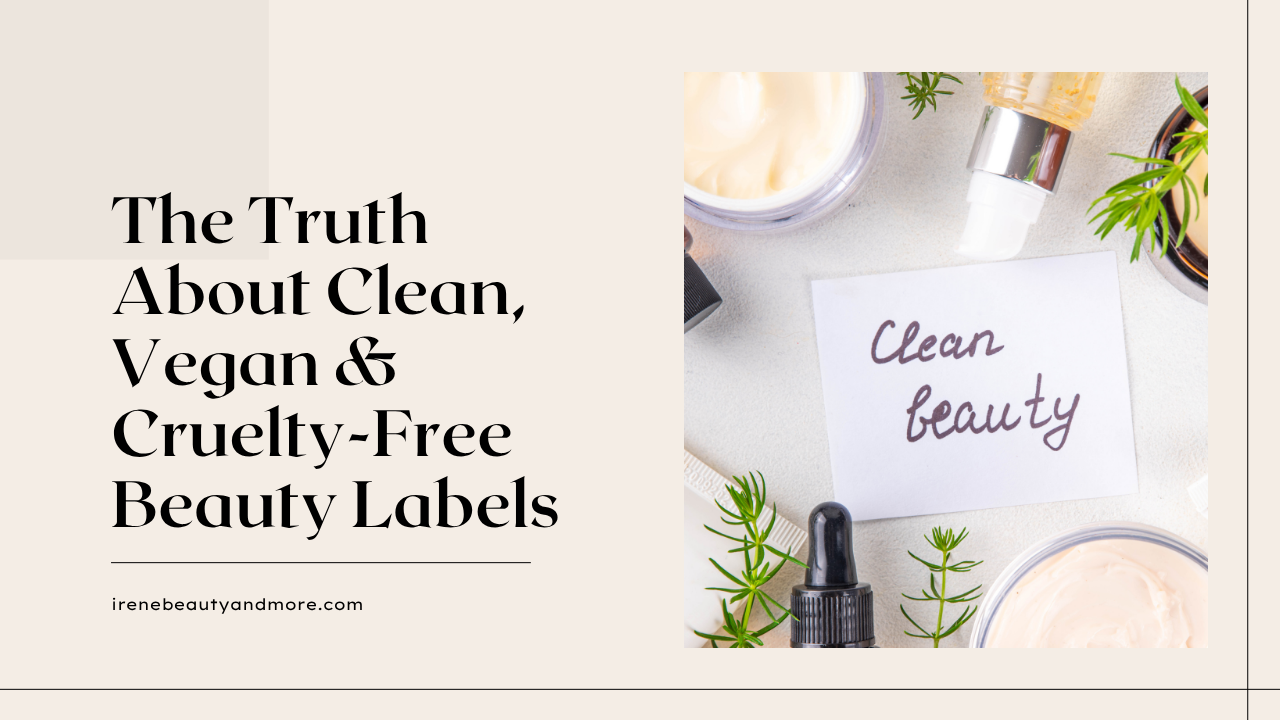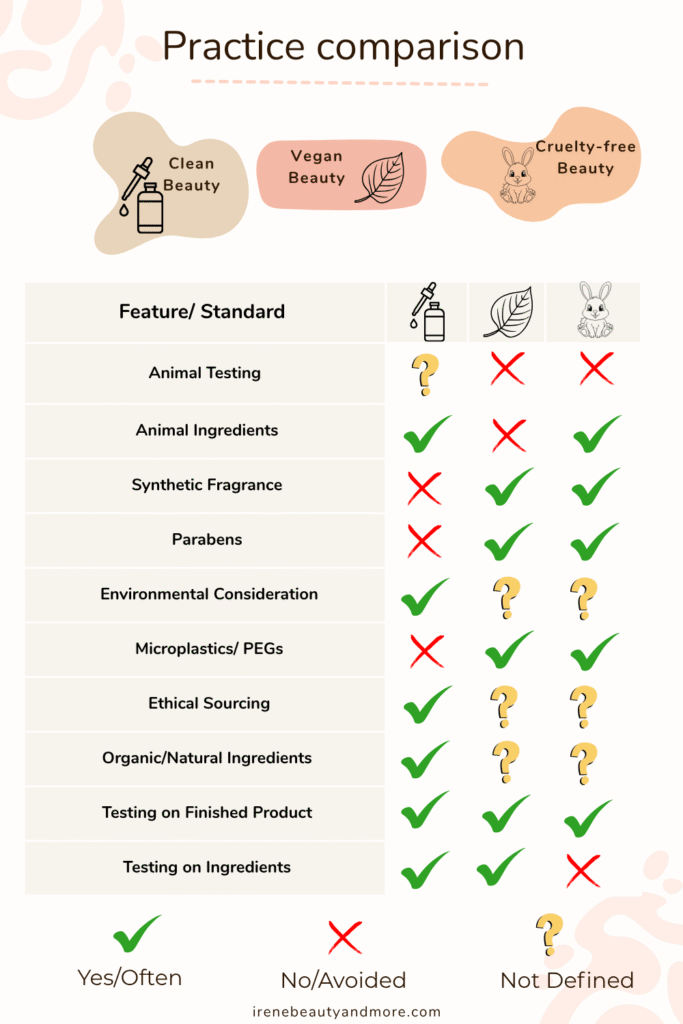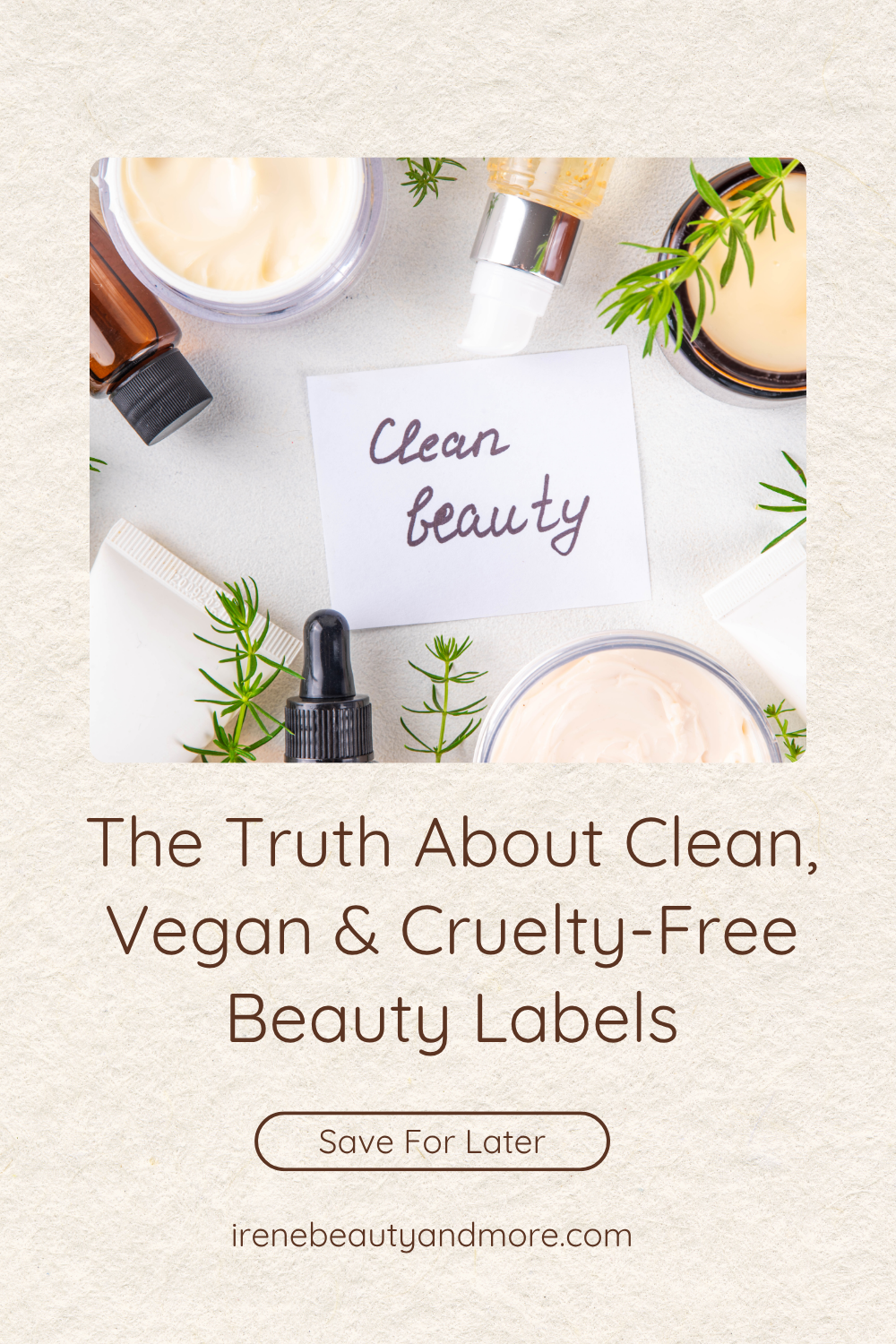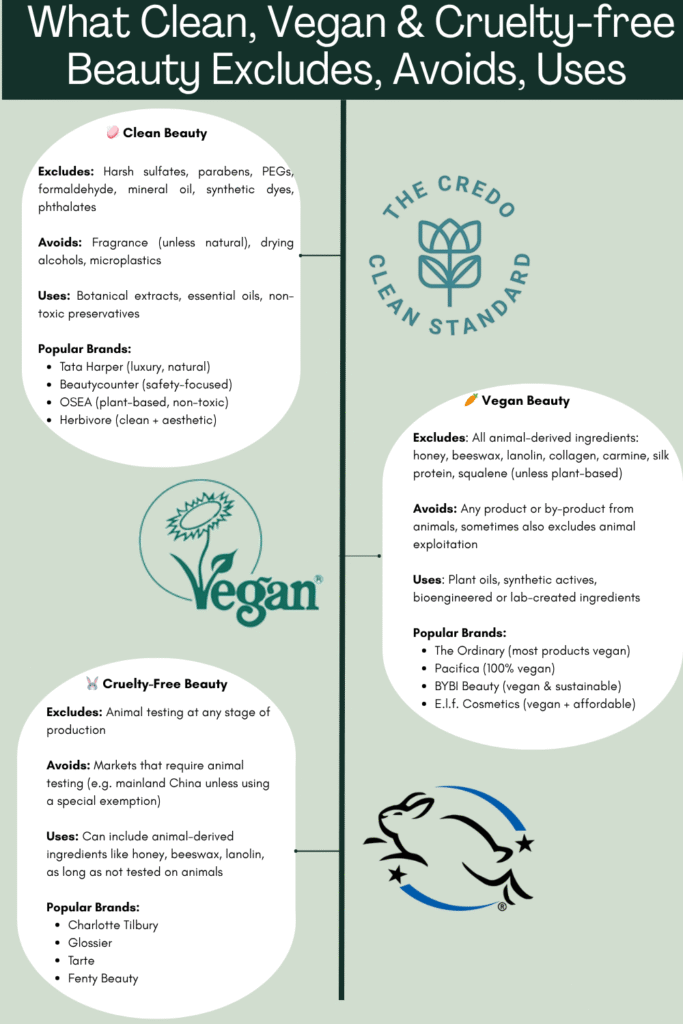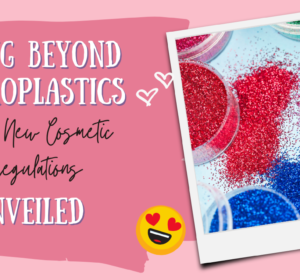The beauty industry is brimming with buzzwords, and clean, vegan, and cruelty-free are among the most talked about. While these terms often overlap, they mean very different things. Understanding these distinctions can empower you to make informed choices based on your values, preferences, and skin needs.
This post explores the definitions, differences, and implications of clean, vegan, and cruelty-free beauty, providing an exhaustive guide to what each label truly signifies.

What Does “Clean Beauty” Mean?
Clean beauty focuses on ingredient safety and transparency. Products labelled as clean are formulated without ingredients deemed harmful to human health or the environment.
Key Features of Clean Beauty:
No Harmful Chemicals: Avoidance of potentially toxic ingredients like parabens, sulfates, phthalates, and formaldehyde.
Emphasis on Transparency: Brands provide detailed ingredient lists and explanations of their safety standards.
Sustainability: Many clean beauty brands prioritise eco-friendly sourcing, packaging, and production.
Common Misconceptions About Clean Beauty:
Not Always Natural: Clean beauty doesn’t mean that products are entirely plant-based or organic; safe synthetic ingredients may be included.
Unregulated Term: There is no standardised definition of “clean beauty,” which allows brands to use the term freely without external certification.
Popular Clean Beauty Certifications:
EWG Verified: Ensures products meet strict health standards and contain no harmful ingredients.
Credo Clean Standard: Focuses on ingredient safety and ethical sourcing.
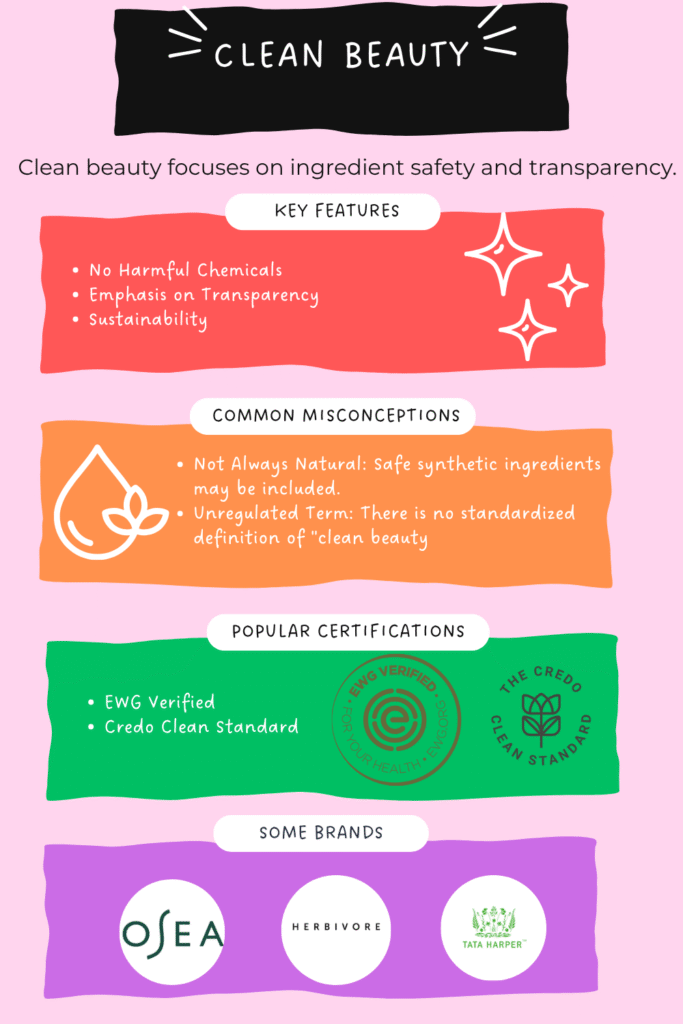
What Does “Vegan Beauty” Mean?
Vegan beauty products contain no animal-derived ingredients or byproducts. This definition extends to both the formulation and production processes.
Key Features of Vegan Beauty:
No Animal Ingredients: Excludes ingredients like beeswax, lanolin, collagen, and carmine.
Plant-Based Formulations: Emphasises plant-based and synthetic alternatives.
Lifestyle Choice: Appeals to consumers seeking to avoid animal-derived products for ethical or dietary reasons.
Common Misconceptions About Vegan Beauty:
Not Necessarily Clean: Vegan products can still contain synthetic chemicals or potentially harmful ingredients.
Not Automatically Cruelty-Free: A vegan product might still be tested on animals unless explicitly stated as cruelty-free.
Popular Vegan Beauty Certifications:
Vegan Society: Ensures products contain no animal derivatives.
Certified Vegan: A label awarded by Vegan Action, guaranteeing vegan compliance.
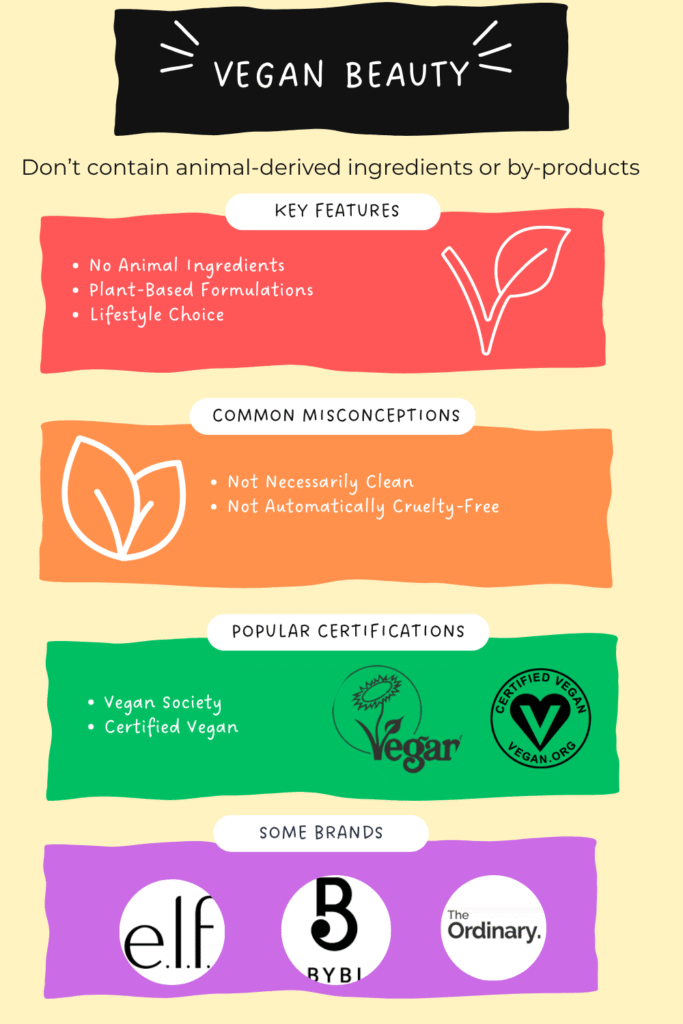
What Does “Cruelty-Free Beauty” Mean?
Cruelty-free products are not tested on animals at any stage of development. This encompasses the finished product, ingredients, and third-party testing.
Key Features of Cruelty-Free Beauty:
No Animal Testing: No part of the product’s development involves animal testing.
Ethical Manufacturing: Brands often ensure humane practices across their supply chains.
Global Testing Policies: Many cruelty-free brands avoid selling in countries where animal testing is required by law (e.g., China).
Common Misconceptions About Cruelty-Free Beauty:
Not Necessarily Vegan: A cruelty-free product can contain animal-derived ingredients like honey or silk.
“Not Tested on Animals” May Be Misleading: Some brands claim this label for the finished product but may use ingredients tested on animals.
Popular Cruelty-Free Certifications:
Leaping Bunny: The gold standard for cruelty-free certification.
PETA’s Beauty Without Bunnies: Recognises brands committed to animal welfare.
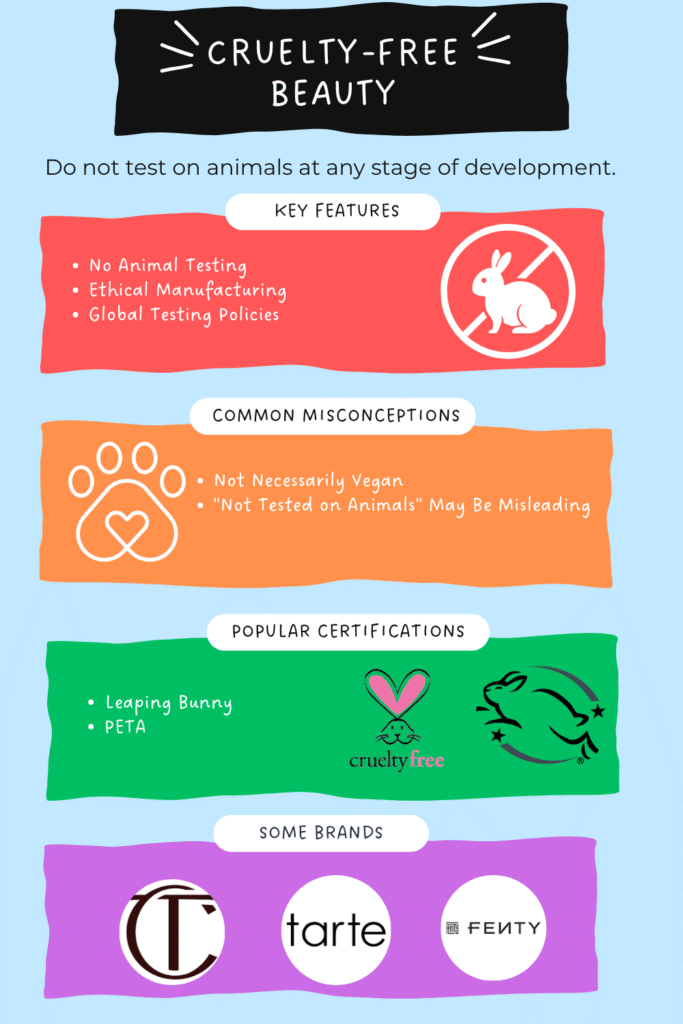
How Do These Terms Overlap?
While clean, vegan, and cruelty-free are distinct concepts, they often overlap:
Clean + Vegan: A product that avoids harmful chemicals and excludes animal-derived ingredients.
Vegan + Cruelty-Free: A product that contains no animal ingredients and is not tested on animals.
Clean + Cruelty-Free: A product free from toxic chemicals and animal testing.
Clean + Vegan + Cruelty-Free: The trifecta, offering safe, plant-based, and ethically produced products.

Why the Distinctions Matter
For Ethical Consumers:
Vegan and cruelty-free certifications cater to ethical concerns about animal welfare.
For Ingredient Safety:
Clean beauty focuses on human and environmental health, appealing to those avoiding toxins.
For Brand Transparency:
Understanding these terms helps identify brands that align with your personal values and priorities.
How to Identify Clean, Vegan, and Cruelty-Free Products
Check the Ingredients: Look for certifications or ingredient exclusions aligned with clean or vegan standards.
Seek Certifications: Verify claims with trusted certifications like Leaping Bunny, EWG Verified, or the Vegan Society.
Research the Brand: Investigate the brand’s policies on animal testing, ingredient sourcing, and sustainability.
- A product can be vegan yet not cruelty-free if its raw materials were animal-tested.
- “Clean” has no legal definition; Sephora and Credo use self-generated exclusion lists.
- Synthetic squalane (from sugarcane) became mainstream only in 2019, replacing shark-derived squalene.
Global Trends in Clean, Vegan, and Cruelty-Free Beauty
Clean Beauty:
Rising awareness of environmental toxins has spurred the growth of clean beauty worldwide.
Regions like Europe have stricter regulations, banning over 1,300 harmful ingredients.
Vegan Beauty:
The demand for vegan beauty has skyrocketed alongside plant-based diets.
Major brands are increasingly launching vegan product lines to cater to this growing market.
Cruelty-Free Beauty:
Public outcry has led to bans on animal testing in many regions, including the EU and India.
However, loopholes still exist, especially for products sold in countries requiring animal testing.
Clean Beauty
Marketing term implying non-toxic ingredients, often free from parabens, phthalates, and synthetic fragrance.
Vegan Beauty
Products containing no animal-derived ingredients (beeswax, carmine, keratin).
Cruelty-free
Finished product and ingredients not tested on animals.
Leaping Bunny
Internationally recognised cruelty-free certification.
The Challenges of Labelling
The lack of universal standards for clean, vegan, and cruelty-free labels can make navigating these terms confusing. Some brands engage in “greenwashing” to market their products as ethical or safe without substantiating their claims.
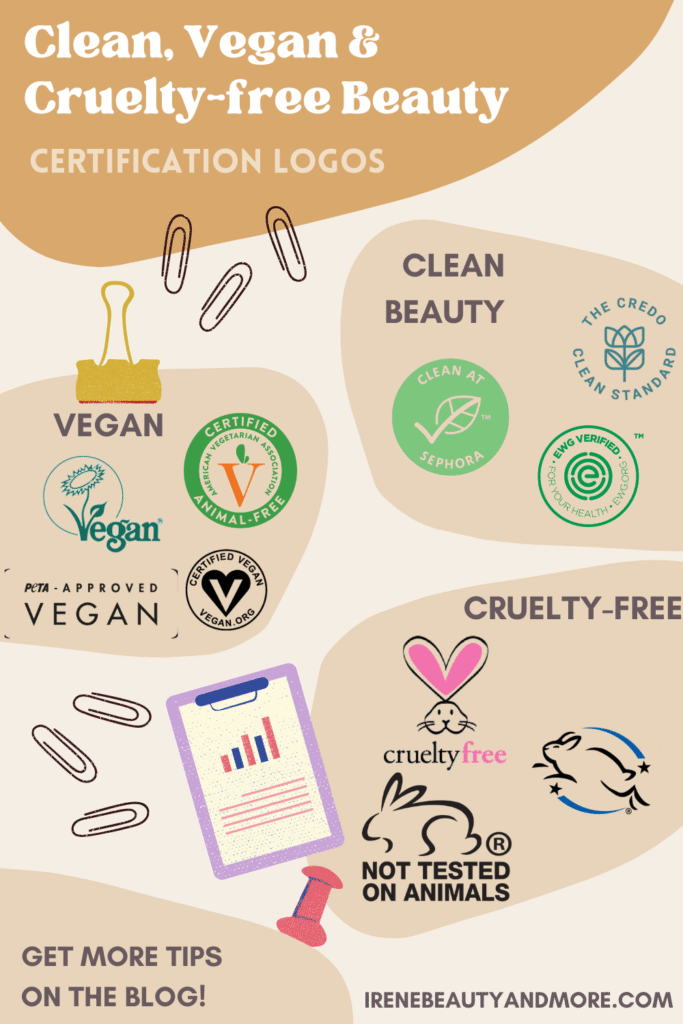
Conclusion: Making Informed Choices
Understanding the differences between clean, vegan, and cruelty-free beauty is crucial for making ethical, safe, and sustainable choices. While no product will meet every criterion for every consumer, recognising these labels’ nuances ensures you can choose products aligned with your values.
Is “clean” safer?
Not inherently—natural allergens (e.g., essential oils) can be more sensitising than synthetic alternatives.
Can a product be certified Leaping Bunny but sold in China?
Yes, if sold via cross-border e-commerce that bypasses post-market testing.
How can I verify vegan status?
Look for Vegan Society or PETA logos, or check INCI for carmine (CI 75470), lanolin, silk proteins.
Bear in mind that some of the links in this post are affiliate links and if you go through them to make a purchase I will earn a commission. Keep in mind that I link these companies and their products because of their quality and not because of the commission I receive from your purchases. The decision is yours, and whether or not you decide to buy something is completely up to you.
